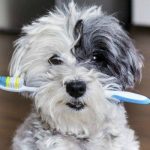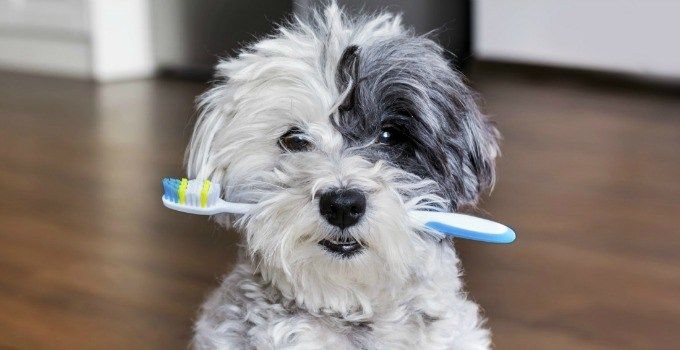Caring for your Havanese involves more than just taking care of his coat. A proper care for the ears, eyes, and teeth is a must. Total care throughout the life of your Havanese can help prevent illnesses and other problems from occuring in the future.
Ear Care
A little ear cleaner or witch hazel on a cotton ball, just damp with the liquid squeezed out, is used to clean out the inside of your Havanese’s ears. Use a cotton swab to wipe out crevices too small for cotton balls to reach. Excess hair growing in the ear canal should be pulled out to avoid infection.
Sprinkle antibiotic powder in the ear first, and use tweezers to get a better grip. Folded ears like those of a Havanese are prone to ear infections, so keep his ears clean and dry.
Eye Care
Some Havanese eyes tear more than others. If you trim the hair at the corners of the eyes, you will need to keep trimming it, because the short, growing hair can irritate the eyes. Leaving the hair at the edges of the eyes long, the same length as the other hair on the head, irritates eyes less.
Smooth and comb the hair down and away from the eyes. Curlier hair is harder to tame and may tickle the eyes more often. The more the eyes are irritated, the more they will tear.
You can remove tear stains under the eyes with special products for that purpose. Use a flea comb and cotton ball to remove matter from the inner corners of the eyes. If the matter has dried, use a moistened cotton ball to remove it.
Dental Care
Den tal care is important for all dogs but especially for toy dogs whose teeth should last for a long life. Toy dogs have more dental problems because of their smaller mouths, and they tend to lose teeth with age, so good care is critical. Healthy teeth also help avoid bad breath.
tal care is important for all dogs but especially for toy dogs whose teeth should last for a long life. Toy dogs have more dental problems because of their smaller mouths, and they tend to lose teeth with age, so good care is critical. Healthy teeth also help avoid bad breath.
Plan on weekly teeth cleaning. Use a small, soft toothbrush and special toothpaste for dogs. In a pinch, a clean, dry washcloth wrapped around your finger can be used to wipe your dog’s teeth.
Provide your dog with toy dog-sized chew toys and bones that help keep teeth clean and gums healthy. Make sure he cannot chew off a piece and swallow it.
Include a dental exam in your weekly grooming sessions. Look for gums that are a different color than normal, loose teeth, and tartar buildup.
Point these out to your veterinarian on your next visit. If puppy teeth do not fall out when adult teeth come in, the puppy teeth may have to be pulled.

